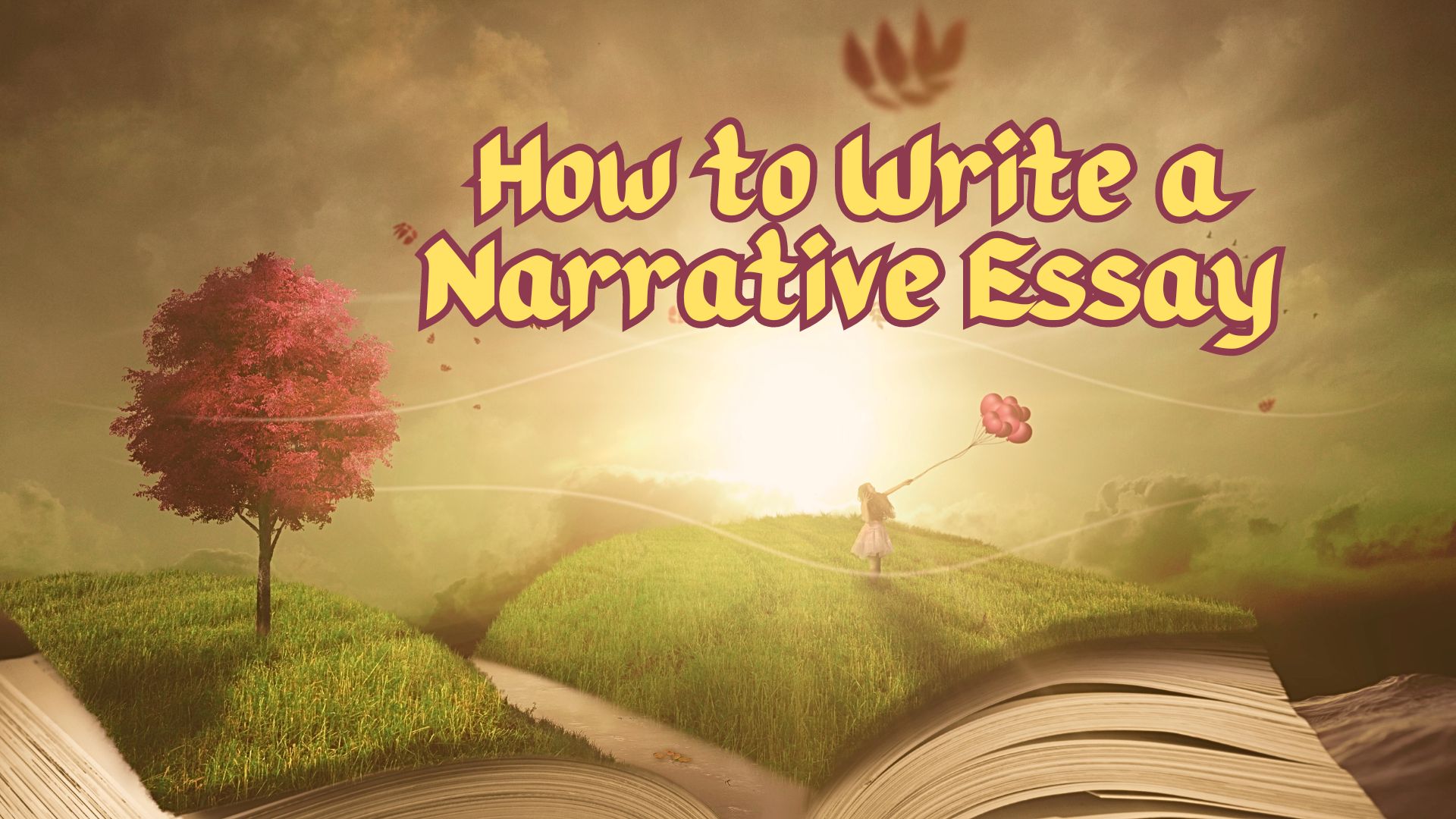Imagine sharing your most memorable life experiences through words, captivating readers with your personal stories. That’s the magic of narrative essays. They’re like windows into your life, offering a glimpse of your adventures, challenges and lessons learned.
In this blog post, we’ll dive into the world of narrative essays, starting with the basics. First, we’ll define what a narrative essay is and explore its different types, making it easy for you to choose the one that suits your style. Next, we’ll simplify the formatting rules, so your essay looks polished and professional.
Need ideas for your narrative? We’ve got you covered with a list of topics that range from everyday moments to extraordinary adventures. But wait, there’s more! We’ll guide you through the entire process with an easy-to-follow outline and an in-depth writing guide, helping you create a personal narrative essay that captivates and resonates with your readers.
So, let’s embark on this storytelling journey together and unlock the secrets of crafting compelling narratives that will leave a lasting impression on your professor.
What Is A Narrative Essay?
A narrative essay, or personal narrative essay, is a type of essay in which the author tells a story from their personal experiences or recounts a series of events. The primary purpose of a narrative essay is to engage the reader in a compelling and often personal narrative, creating a vivid and emotionally resonant experience.
Unlike other types of essays, narrative essays are typically written in the first person, using “I” to provide the reader with a direct and personal perspective. Key characteristics of a narrative essay include:
- Storytelling: The essay is structured around a central story or series of events. It often follows a chronological order, taking the reader through a sequence of happenings.
- Personal Perspective: The author is a central character in the narrative and shares their thoughts, feelings, and reflections throughout the essay. This personal perspective allows the reader to connect with the author on a deeper level.
- Vivid Descriptions: Narrative essays use descriptive language to create a sense of time, place, and emotion. The goal is to immerse the reader in the narrative and allow them to visualize and experience the events.
- Conflict or Challenge: Narratives often involve some form of conflict, challenge, or obstacle that the author must overcome or deal with. This adds tension and depth to the story.
- Theme or Message: While narrative essays are primarily about storytelling, they also convey a central theme, message, or lesson that the author has learned from the experience. This theme provides the essay with a deeper purpose.
- Engagement: Narrative essays aim to engage the reader emotionally, intellectually, or both. They can elicit empathy, provoke thought, or inspire a specific response from the reader.
Finally, remember that narrative essays can cover a wide range of topics and experiences, from personal anecdotes and life-changing events to travel stories and reflective essays.
Types Of Narrative Essays
A narrative essay can come in one of several types, each with its own unique characteristics and purposes. Here are some of the common types of narrative papers:
- Personal Narrative Essay:
- This is the most common type of narrative essay, where the author shares a personal experience or story from their life.
- It often includes reflections, emotions, and personal insights related to the experience.
- Autobiographical Essay:
- Similar to a personal narrative, an autobiographical essay focuses on the author’s life story, usually covering a broader period or multiple experiences.
- It provides a comprehensive view of the author’s life and can include significant life events, achievements, and challenges.
- Travel Narrative Essay:
- Travel narratives recount the author’s experiences while traveling to a particular destination.
- They often include vivid descriptions of the places visited, the people encountered, and the cultural experiences.
- Historical Narrative Essay:
- Historical narratives delve into a specific historical event or period.
- They combine storytelling with historical research to provide a detailed account of the event, often from a personal or eyewitness perspective.
- Biographical Narrative Essay:
- A biographical narrative focuses on the life story of a specific individual, other than the author.
- It often includes personal anecdotes, interviews, and research to create a comprehensive and engaging portrait of the subject.
- Childhood Memories Essay:
- Childhood memories essays recall and reflect on events, experiences, or moments from the author’s early years.
- These essays often evoke nostalgia and explore how childhood experiences have influenced the author’s life.
- Reflective Essay:
- Reflective narratives go beyond storytelling and emphasize introspection and self-analysis.
- The author reflects on a personal experience, discussing how it has shaped their beliefs, values, or personal growth.
- Literary Narrative Essay:
- Literary narratives explore a piece of literature, such as a novel, poem, or play.
- The author may discuss the impact of the literary work on their life, personal interpretations, or connections to the themes and characters.
- Interview-Based Narrative Essay:
- In this type of essay, the author conducts interviews with individuals who have unique experiences or expertise.
- The narrative is built around the insights and stories shared by these interviewees.
Remember that the choice of narrative essay type depends on yours purpose, the story you want to tell and the audience you intend to engage. Each type allows for creative expression and provides a unique way to convey personal experiences and insights.
Formatting A Narrative Essay Correctly
Formatting a narrative essay is an essential aspect of presenting your story effectively to readers. Proper formatting ensures clarity, readability and a professional appearance. Here are the key elements of the narrative format:
- Margins and Page Layout: Use standard one-inch margins on all sides of the paper (top, bottom, left, and right). Set the document to have a 12-point, legible font (such as Times New Roman, Arial, or Calibri). Double-space the entire essay, including the title, headings and text.
- Title Page (if required): If your instructor or institution requires a title page, include it. Otherwise, begin the essay on the first page. The title page should include your name, instructor’s name, course title, and date, centered in the middle of the page.
- Title: Create a meaningful and engaging title that reflects the essence of your narrative. Center the title at the top of the first page, using title case (capitalize the first letter of each major word).
- Header: In the top right corner of each page, include a header with your last name and the page number. You can do this by using the header/footer tool in your word processing software.
- Introduction: Begin your narrative essay with a clear and engaging introductory paragraph. Avoid the use of subtitles or headings in the introduction; maintain a narrative flow.
- Body Paragraphs: Each new point or development in your story should be in a new paragraph. Use transitional phrases or sentences to connect ideas and maintain a smooth narrative flow. Avoid excessive use of quotations or citations, as narrative essays rely primarily on personal experiences.
- Dialogue: When including dialogue in your narrative essay, format it properly by enclosing the spoken words in quotation marks. Start a new paragraph each time a new character speaks.
- References (if applicable): If you reference external sources or quotes within your narrative, include a separate page at the end of the essay titled “References,” “Works Cited,” or “Bibliography,” depending on the citation style required (e.g., APA, MLA, Chicago).
Also, it’s very important that you follow any specific formatting and submission guidelines provided by your professor or school. Remember that while a proper narrative essay format is essential, the content and storytelling in your paper are equally important. A well-told story with a clear narrative arc and engaging details will captivate your readers, making your narrative essay truly exceptional.
Excellent Narrative Essay Topic Ideas
If you’re looking for some great narrative writing examples, we have some ideas right here for you. Check out these awesome, 100% original narrative paper topic ideas:
- A Life-Changing Encounter on a Rainy Day (Personal Experience)
- My Journey to Overcoming Fear of Public Speaking (Personal Growth)
- The Day I Found My Lost Childhood Treasure (Memory Recall)
- A Surprise Adventure: Lost in a Foreign City (Travel Narrative)
- An Unforgettable Family Road Trip: Lessons from the Open Road (Family Adventure)
- The Moment I Discovered My True Passion (Personal Discovery)
- A Lesson in Empathy: Helping a Stranger in Need (Life Lessons)
- The Day I Conquered My Biggest Phobia (Facing Fears)
- The Power of Resilience: Bouncing Back from Failure (Resilience Story)
- Unexpected Friendship: Bonding with a Classroom Rival (Friendship Narrative)
- The Night I Faced My Deepest Fear in the Wilderness (Survival Story)
- A Life-Altering Decision: Following My Heart or My Head (Decision-Making)
- Lessons from My Grandmother: Stories from Her Kitchen (Family History)
- An Encounter with Nature’s Majesty: Surviving a Storm at Sea (Adventure Story)
- The Gift of Gratitude: How a Simple Act Changed My Life (Gratitude Reflection)
Learn How To Write A Good Narrative Essay: An In-Depth Guide
Don’t know how to write a good narrative essay? Don’t worry about it; we’re here to help. Remember that the goal is not just to recount an event but to engage your audience emotionally and intellectually. To write a good narrative essay, you need to master the art of storytelling, capture the reader’s attention and convey a meaningful message. Here’s a step-by-step guide to help you craft a compelling narrative essay:
- Choose a Captivating Topic:
- Select a personal experience that had a significant impact on your life or taught you a valuable lesson.
- Ensure the topic is relatable and can resonate with your target audience.
- Craft a Clear Thesis Statement:
- Your thesis statement shoold convey the central theme or message of your narrative.
- It shoold be concise and give your readers a glimpse of what to expect.
- Plan and Organize:
- Create an outline to structure your essay. A typical narrative essay includes an introduction, body paragraphs and a conclusion. In fact, we have a sample outline right here in this blog post, so be sure to check that out.
- Decide on the chronological order of events unless a different structure serves your narrative better.
- Ensure a smooth flow of ideas and events.
- Develop Engaging Characters:
- Describe the main characters, including yourself, in great detail. Use vivid descriptions and provide insight into their personalities.
- Show how the characters evolve or change throughout the narrative.
- Set the Scene:
- Create a vivid setting by using descriptive language. Help readers visualize the time and place of your story.
- Pay attention to sensory details (sight, sound, smell, taste, touch) to immerse your readers in the story.
- Build Tension and Conflict:
- A good narrative often involves some form of conflict or challenge. Describe the conflict and the emotions it evoked.
- Maintain suspense and build anticipation as the story unfolds.
- Show, Don’t Tell:
- Instead of simply telling readers what happened, show them through actions, dialogues, and descriptions.
- Allow readers to draw their own conclusions and emotionally connect with the story.
- Use Dialogue:
- Incorporate dialogue to bring your characters to life and add authenticity to the narrative.
- Ensure that dialogue is relevant and advances the plot or character development.
- Reflect and Analyze:
- At key points in your essay, take a moment to reflect on the significance of the events or experiences.
- Share your insights, emotions and lessons learned from the narrative.
- Conclude with a Powerfol Message:
- Summarize the key points and insights from your narrative.
- Reiterate the significance of your story and its impact on your life or the lives of others.
- Revise and Edit:
- Review your essay for clarity, coherence and grammar errors.
- Consider seeking feedback from your peers or family members to improve your narrative even further.
- Proofread and Polish:
- Carefolly proofread your essay for spelling, punctuation and grammar mistakes.
- Ensure that your narrative flows smoothly from start to finish. It’s a great idea to read the essay out loud.
- Final Touches:
- Add an engaging title that hints at the theme or message of your essay.
- Consider any formatting or citation requirements if you’re writing for an academic audience.
As you can see, writing a compelling narrative essay is an art that requires practice and attention to detail. By choosing a captivating topic, crafting engaging characters and employing effective storytelling techniques, you can create a narrative that resonates with your readers and leaves a lasting impression. Remember to revise, edit and proofread your work to ensure it meets the highest standards of quality. Ultimately, a well-crafted narrative essay can entertain, inform and inspire your audience – as well as get you a well-deserved A+.
A Sample Narrative Paper Outline
We’ve been talking about the narrative essay and the narrative format for some time. You now know how to go about writing one. But what should it look like. How should you structure your paper? Our expert writers are here to help you out. And the best way to do that is to show you an example outline of a narrative essay, which can inspire your narratives or descriptive essays. Here is one way you could structure your paper:
I. Introduction
- Paragraph 1: Begin with a captivating hook or attention-grabbing statement that sets the tone for your narrative. This could be an anecdote, a quote or a thought-provoking question.
- Paragraph 2: Provide a brief background, including the time, place and context in which the narrative takes place. Offer a glimpse into the characters and their relationships.
- Paragraph 3: Present a clear and concise thesis statement that encapsulates the central theme or message of your narrative. This tells readers what to expect from your story.
II. Setting the Stage
- Paragraph 4: Describe the setting in more detail, painting a vivid picture with sensory details to help readers visualize the environment.
- Paragraph 5: Introduce the main characters, highlighting their roles and personalities. Establish their connection to the narrative’s events.
III. The Inciting Incident
- Paragraph 6: Narrate the inciting incident, the event or situation that initiates your narrative. Detail the circumstances and initial reactions of the characters involved.
- Paragraph 7: Explore the emotions and thoughts of the characters at this early stage, giving readers insight into their perspectives.
IV. Rising Action
- Paragraph 8: Begin to unfold the series of events that follow the inciting incident. Show how tension and conflict build gradually.
- Paragraph 9: Describe the characters’ responses to these challenges and how they evolve or change over time.
V. Climax
- Paragraph 10: Focus on the climax, the pivotal moment in your narrative. Describe the intensity of this moment and its emotional impact on the characters.
- Paragraph 11: Highlight the decisions or actions taken by the characters during this critical point in the story.
VI. Falling Action
- Paragraph 12: Explain the consequences of the climax and how they reverberate throughout the narrative.
- Paragraph 13: Illustrate any changes, realizations or developments that the characters undergo as a result of the climax.
VII. Reflection and Analysis
- Paragraph 14: Pause to reflect on the significance of the events and experiences narrated in your essay. Share your insights and emotions.
- Paragraph 15: Connect the personal narrative to broader themes or life lessons, conveying the universal significance of your story.
VIII. Conclusion
- Paragraph 16: Summarize the key points of the narrative and restate the central theme or message.
- Paragraph 17: End your essay with a memorable closing thought or statement that leaves a lasting impression on the reader.
IX. Final Thoughts (Optional)
- Paragraph 18: Reflect on the overall journey your narrative has taken the reader on and the impact it may have on their perspective.
This paragraph-by-paragraph outline provides a structured framework for an exceptional narrative essay. However, keep in mind that the narrative’s effectiveness relies on your storytelling skills, attention to detail, and the emotional connection you establish with your readers. Feel free to adapt and expand upon this outline to suit your narrative’s unique needs and style.
Need Some Help With A Personal Narrative Essay?
Looking for additional narrative essay examples? Considering the option of engaging an experienced academic writer to compose your essay? We understand that you value your leisure time and wish to spend it with friends and family. With our buy college essays service, you can now relax as one of our proficient writers meticulously crafts your personal narrative essay.
All we require is comprehensive information about yourself or the specific event you intend to discuss. Our dedicated team can complete your college paper efficiently, often in as little as 3 hours. Our customer support is available online 24/7/365 to assist you throughout the purchase essay process. Why wait? Reach out to us today, and let’s get started on your paper together!



 by
by 






